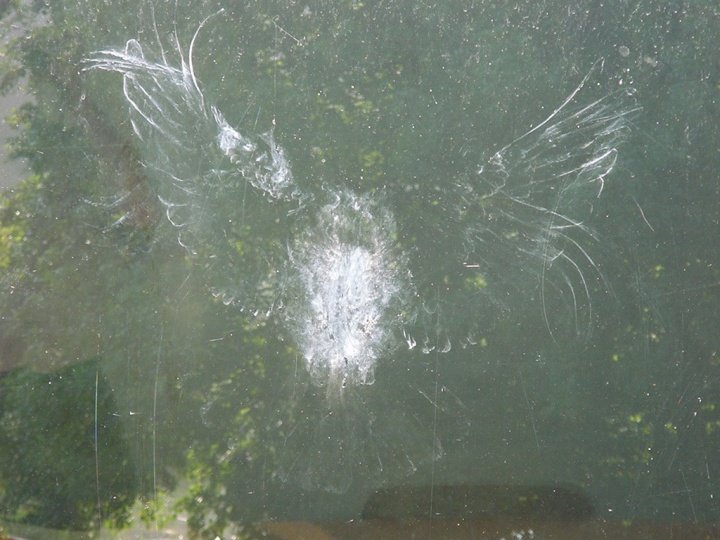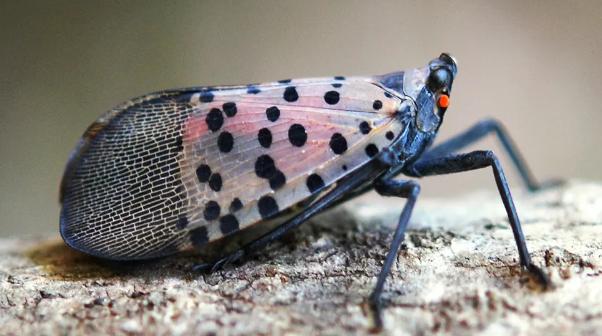Imagine, as you’re putting your groceries in your car, you see a horrid creature. Something that resembles a human, yet also completely alien! As it approaches, you shriek, dropping all of your groceries. Your baby brother, who is in the backseat of the car, looks over. The alien knocks you to the ground and grabs the paper ‘Trader Joe’s’ bags. Goodbye forever, chili-lime flavored rolled corn tortilla chips. As it swings open your car door, it grabs your 10-month old baby brother and gallops away into town.
As you sit there in both horror and awe, you realize: this how native species feel when humans release invasive species into their civilizations.
What is an invasive species?
An invasive species is an organism in an environment where it is not native that negatively affects the ecology and/or the economy. However, not all introduced species are invasive. An introduced species is simply an organism that does not belong in the ecosystem, often introduced by humans. An invasive species is an animal that causes harm to the ecosystem by its being there. Therefore, all invasive species are introduced species, but not all introduced species are invasive. Often, invasive species are introduced to the environment by humans. Some examples of this is pet release or accidental release, where an organism that inhabited maybe, someone’s backyard, escapes into the wild. In the past, when humans traded by ship, animals and seeds would travel to different continents by tagging along.
Below are some invasive species that inhabit Connecticut.
The Emerald Ash Borer
Emerald Ash Borers are long, iridescent, green beetles. They are good at flying and find Connecticut’s climate quite suitable for raising their young.
These beetles, while native to Northeast Asia, have been found all over the United States, in worrying quantities. According to the Animal and Plant Health Inspection Service, “We have detected EAB infestations in 36 States and the District of Columbia” (USDA). The first infestation was detected in southeast Michigan in 2002, the EAB proving themselves as a species that spreads quickly.
Emerald Ash Borers get transmitted through states so rapidly because people easily distribute them to distant places through infected firewood, logs or nursery stock.
Emerald Ash Borers are damaging to ash trees in Connecticut because they lay their eggs on the trunk. When the eggs hatch, the larvae burrow into the tree and feed on the inner bark. Over time, this causes the ash tree to deteriorate. According to the United States Department of Agriculture, some symptoms of an ash-borer-infected-tree are “dead branches near the top of ash trees, excessive branching on tree trunks and vertical cracks in tree bark” (USDA). In addition, they pupate during the winter and emerge from the trees through D-shaped holes in the spring as adults.
Emerald Ash Borers are difficult to get rid of. Besides pesticides, there is little one can do about Emerald Ash Borers. These pesticides are extremely expensive and not guaranteed to work. This reinforces the fact that once an invasive species is introduced, it’s hard to go back.
The Norway Maple
Norway Maples are fast growing invasive trees with dense canopies. Often mistaken for Sugar Maples, many people do not realize they are an invasive tree.
Norway Maples are a Eurasian species that, according to the Brandywine Conservancy, was first brought to the US in 1756 by John Bartram, keeping them for his garden (Hunt). At first, their numbers were under control, but soon the trees escaped into the environment. However, they only grew popular in the 1800s because landscapers liked them for their durability and quick maturing rate. Now, they’ve become a common street tree throughout the northeast and midwest.
For the same reasons that people like them, Norway Maples are harmful to other trees. Their dense canopies make it hard for native plants to get sunlight. They also mature quickly, and are durable, which makes them hard to get rid of. They tolerate shade and do not need recently disturbed areas to establish themselves. According to the Brandywine Conservancy, “Once established in an urban or suburban setting, Norway maples will produce large quantities of seed that are carried by wind into adjacent natural areas” (Hunt).
Despite their environmental repercussions, it is still legal to purchase and cultivate Norway Maples. In addition to generally fighting native species for resources, studies suggest that Norway Maples may release allelopathic chemicals, hindering the growth of other plants surrounding it.
Furthermore, Norway Maples closely resemble Sugar Maples, making them hard to identify and get rid of. However, there are many differences between the two trees. While Sugar Maple leaves have 5 terminal lobes, Norway Maples can have up to 7. In addition, when you snap their stems, Norway Maples excrete milky sap while Sugar Maples do not. Lastly, their samaras, often known as helicopter seeds, have flat bases while Sugar Maple’s are round.
Norway Maples can be difficult to identify, but once identified, there are a few solutions that can be used to exterminate them. If the tree is a sapling, it can be ripped right out of the ground. The other solution is herbicide, though that may also be harmful to native species.
The Spotted Lanternfly
Spotted Lanternflies are invasive insects that have powerful jumping legs and develop wings during their lifetime. Their larvae are often black with white spots, becoming red as it matures. They feast in armies and are very difficult to get rid of.
Spotted Lanternflies are native to China, and though scientists are unsure, they hypothesize they first arrived when a stone shipment from Asia carried lanternfly eggs to America in 2012. The first infestation was found in Berks County, Pennsylvania in 2014 and they’ve since spread throughout 17 states, including Connecticut.
People have tried to quarantine infected areas, however despite their efforts, Spotted Lanternflies have been able to spread all across the northeast. Spotted Lanternflies spread very quickly because not only do they reproduce incredibly efficiently, but they also are able to travel long distances through a variety of methods. According to Cornell College of Agriculture and Life Sciences, “Females lay one or two egg masses, each containing 30 – 60 eggs laid in rows” (Eshenaur). Due to this, Spotted Lanternflies are able to proliferate rapidly and therefore make themselves at home quicker in new environments.
Furthermore, Spotted Lanternflies have found many ways to grow their territories. One example of this is their capable builds. According to Cornell College of Agriculture and Life Sciences, “On their own, they are able to move 3 to 4 miles by walking, jumping and flying” (Eshenaur). In addition, adults will hitchhike on vehicles and in trash cans while eggs, which can be laid on most anything, can be accidentally transported to other locations.
Spotted Lanternflies are problematic because they damage plants and also are generally nuisances. Spotted Lanternflies’ diets consist of sugary plants that provide them with lots of nutrients, however they need to excrete the sugars that they can’t digest. They do this by shooting honeydew out of their abdomen, which grows sooty mold and attracts other pests. The mold causes plants to ooze, wilt and die, posing the problem of food shortage for native organisms that also eat the plant. This is especially troublesome because Spotted Lanternflies feed in such large quantities that it has seriously impacted biodiversity. Spotted Lanternflies can also be pesky for farmers, as their honeydew seems to affect grapes and a few other crops.
Some ways you can help combat the lanternfly spread is by setting traps and going on an egg hunt. And, of course, it always helps to squash them when you see them. One type of trap that has proven effective is the sticky band trap, which you can wrap trees in to capture lanternflies when they feed. Since they’re quick creatures, they evade predators easily, so traps are very useful in containing their numbers.
Spotted Lanternflies lay large egg masses that you can help get rid of. In late fall and early winter, adult Spotted Lanternflies have laid their eggs and all of them are on their deathbed. At this time, you can spot eggs that “are typically about 1 1/2″ long and and 3/4″ wide and look like grayish splotches of mud or putty” (Eshenaur). They’re often of branches or on the underside of logs or objects, but can be laid on any hard surface. Their eggs are very durable and even if they’re scraped off, they can survive. The best way to get rid of them is to scrape them into a plastic bag with any toxic solution you have, such as rubbing alcohol, nail polish remover, and hand sanitizer.
Conclusion
After a species gets released, it takes a lot of resources to stop them from ruining the ecosystem. All we can do as a student, a teacher, or a parent can do is try to stop the spread.
What the government needs to do is create and enforce laws to prevent invasive species from getting transported and escaping in the first place. Currently, it’s illegal to release pets- some examples of pets becoming problematically invasive are goldfish in Minnesota and parrots in Florida. In addition, there is certain produce you can’t bring into America.
These laws continue to help stop invasive species from spreading, but there is more that can be done. People continue to buy and plant Norway Maples and spread species across state lines. By informing the community around you, you can make a difference and get the attention of the government to take action!
Works Cited
Eshenaur, Brian. “Spotted Lanternfly.” Cornell CALS, cals.cornell.edu/new-york-state-integrated-pest-management/outreach-education/whats-bugging-you/spotted-lanternfly. Accessed 24 Nov. 2024.
Hunt, Evan, and Easement Stewert. “Invasive Species Spotlight: Norway Maple.” Brandy Wine Conservancy, 8 Dec. 2023, www.brandywine.org/conservancy/blog/invasive-species-spotlight-norway-maple. Accessed 24 Nov. 2024.
Semmel, Kyle. “The Invasive Tree that Threatens Our Forests.” Western New York Land Conservancy, 20 Mar. 2023, www.wnylc.org/post/the-invasive-tree-that-threatens-our-forests. Accessed 24 Nov. 2024.
Weeks, Ron, Jr. “Emerald Ash Borer.” US Department of Agriculture, 7 June 2024, www.aphis.usda.gov/plant-pests-diseases/eab. Accessed 24 Nov. 2024.
“What is an invasive species?” National Oceanic and Atmospheric Administration, 16 June 2024, oceanservice.noaa.gov/facts/invasive.html. Accessed 24 Nov. 2024.

















